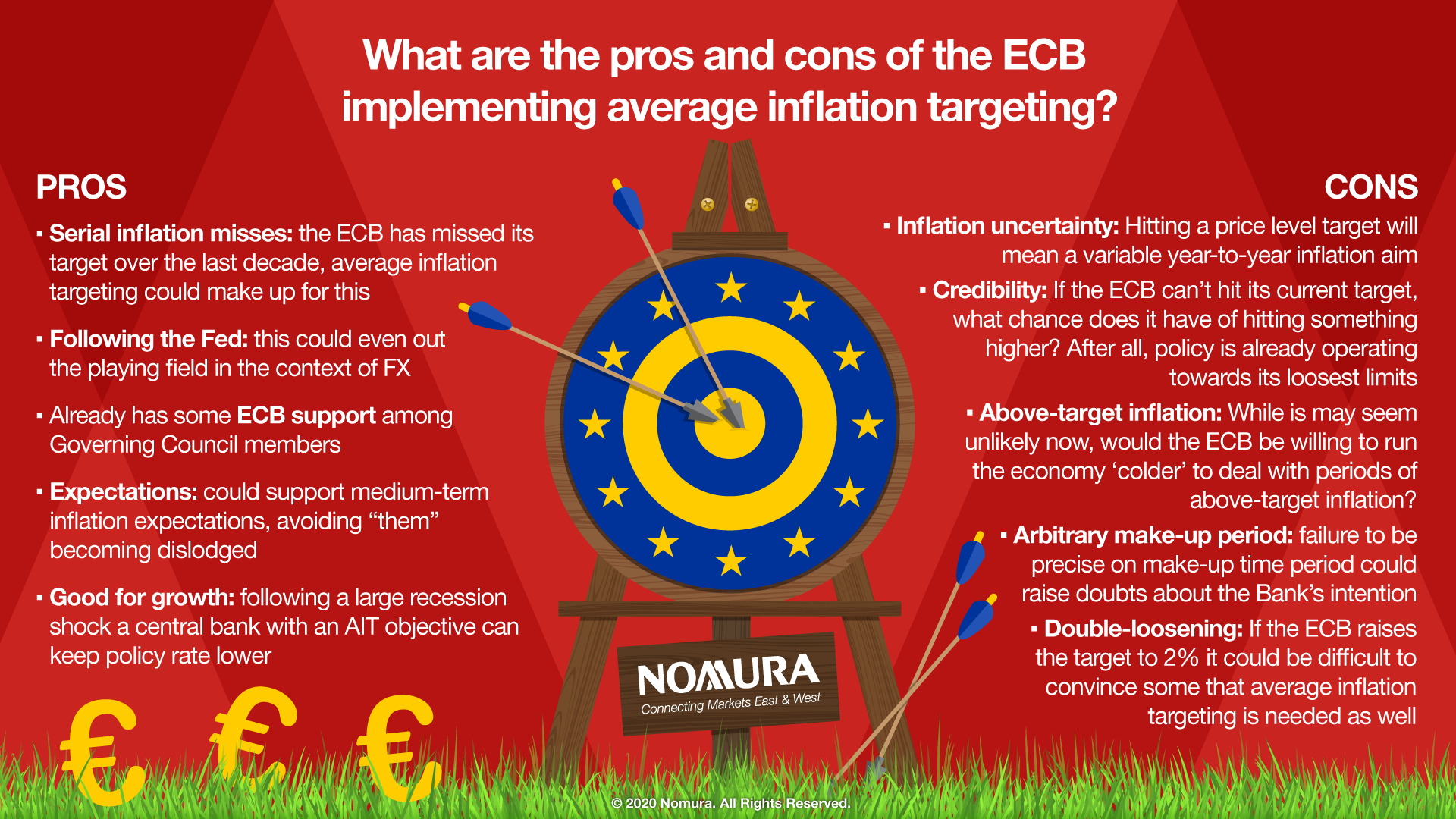Fed Chair Powell used his opening address at a virtual Jackson Hole event last month to announce an updated version of the Fed’s ‘Statement on Longer-Run Goals and Monetary Policy Strategy’. This came after an almost two-year strategy review, the conclusions of which were four-fold,
- An acknowledgment of lower neutral rates allowing other policy tools to be deployed as interest rates more regularly reach the effective lower bound
- Mitigating ‘shortfalls’ rather than ‘deviations’ of employment from its maximum
- To incorporate financial stability more explicitly into its decisions making
- Most importantly, particularly when it comes to implications for the ECB, the FOMC has moved to a 2% average inflation target over time, whereby persistent shortfalls will be offset by aiming “moderately above 2 percent for some time”
As a result of this latter change, our US economists point out that it will be easier now for the committee to react aggressively when inflation undershoots the 2% target, and more passively when inflation is above.
The question for European economy watchers is: what does all of this mean for the European Central Bank, which is itself in the early throes of a strategy review, expected to be wrapped up in the second half of next year? One specific issue for the strategy review is that of the inflation target itself. We consider the pros and cons of an average inflation target for the euro area, evaluate the likelihood of the ECB heading down the route, and consider how the Fed’s latest announcement might change the calculus for the ECB in favour of such a move.
How does the ECB set its target?
The ECB has more leeway to determine its precise inflation target than, say, the Bank of England (BoE), which only has “operational” independence. In contrast to the BoE, the ECB is tasked with a ‘primary objective’ to ‘maintain price stability’ in broad terms. To meet that objective, the ECB is free to adopt a specific strategy, and whilst it defines price stability as HCIP inflation running below 2%, it aims for inflation ‘below, but close to 2% over the medium term’, and to achieve its objective, a ‘two-pillar’ approach provides the framework for the central bank’s appropriate economic and monetary analysis.
Conclusions
Whichever way the ECB decide to adjust its target following the completion of its strategy review, we can expect it to provide space for the Governing Council to lean towards looser policy than otherwise in order to achieve higher inflation outcomes than weak current expectations suggest will be the case. While the Fed’s move to average inflation targeting will not go unnoticed in Europe, the EC may yet choose a more nuanced strategy to support expectations and lift measured inflation outturns.
Read the full report here.
Disclaimer
This content has been prepared by Nomura solely for information purposes, and is not an offer to buy or sell or provide (as the case may be) or a solicitation of an offer to buy or sell or enter into any agreement with respect to any security, product, service (including but not limited to investment advisory services) or investment. The opinions expressed in the content do not constitute investment advice and independent advice should be sought where appropriate.The content contains general information only and does not take into account the individual objectives, financial situation or needs of a person. All information, opinions and estimates expressed in the content are current as of the date of publication, are subject to change without notice, and may become outdated over time. To the extent that any materials or investment services on or referred to in the content are construed to be regulated activities under the local laws of any jurisdiction and are made available to persons resident in such jurisdiction, they shall only be made available through appropriately licenced Nomura entities in that jurisdiction or otherwise through Nomura entities that are exempt from applicable licensing and regulatory requirements in that jurisdiction. For more information please go to https://www.nomuraholdings.com/policy/terms.html.






